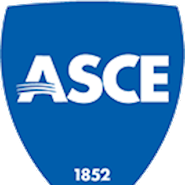
Victor Taboada, Ph.D., P.E., F.ASCE, marine geotechnical manager at Fugro, has been named a fellow by the ASCE Board of Direction.
Taboada’s career in civil engineering has significantly advanced knowledge and practice in soil dynamics. His journey began in Mexico City, where the earthquake of September 19, 1985, profoundly impacted him. Determined to prevent future earthquake damages, he embarked on an academic, research, and practice path focused on soil behavior during seismic events.
He presented the first undergraduate thesis in soil dynamics at National Autonomous University of Mexico (UNAM) in 1987, focusing on seismic response of granular soil deposits. In 1989 he conducted pioneering laboratory testing on cyclic degradation of Mexico City clay. Revealing that permanent deformations develop significantly only when the clay is close to failure under cyclic loading, he proposed a method to estimate permanent deformations induced by seismic loading.
In 1991, under the supervision of Prof. Ricado Doby at RPI, he developed a computer program to determine vertical dynamic response of groups of floating piles, addressing the influence of random variations in soil and pile properties, and finding that they could significantly affect pile group response, reducing the interference of destructive and constructive waves, smoothing peaks and valleys, and perhaps showing that the design is satisfactory after all.
Paul Van Laak and he designed and built a laminar box at RPI that overcame previous limitations of weight and friction. Participating in the VELACS (verification of liquefaction analysis by centrifuge studies) project, he performed centrifuge testing modeling earthquake-induced liquefaction in sand using the laminar box. The results, published in 1993, provided a unique dataset of lateral displacements and dilative response of sands, previously unreported due to laminar box limitations. These findings allowed calibration of numerical models participating in VELACS project.
Taboada's doctoral research focused on centrifuge modeling of earthquake-induced lateral spreading in sand. He published centrifuge results that showed a dilative response in the form of banana loops in the stress-strain cycles, pushing the boundaries of knowledge in lateral spreading. This meant developing a modified Newmark’s sliding-block model that accounts for dilative response of sand to determine earthquake-induced lateral displacements.
As research professor at UNAM in 1999, Taboada used downhole acceleration records to determine the dynamic properties of Mexico City’s clay using system identification techniques. This pioneering research demonstrated how acceleration records can extract parameters related to the seismic behavior of soils.
For one decade, starting in 2012, he focused on developing practical tools to aid engineers in determining dynamic soil properties for site response analyses. All these tools were compiled and published in two journal papers on determining dynamic properties of clay and sand for seismic response analysis.
Since 2022, Taboada has applied artificial intelligence toward predicting Vs of marine soils, finding that the most important parameter is the PCPT data. He also proposes a method to optimize the geotechnical site investigations of offshore wind farms.
Taboada is member of the Society for Underwater Technology and the ASCE Offshore Technology Conference technical organizing committee.



